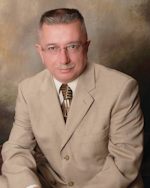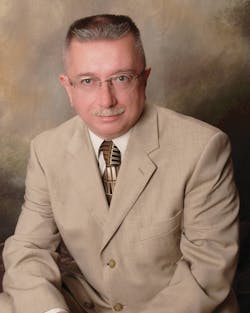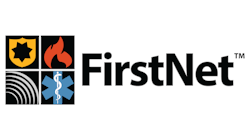Fire Dispatch: Is It Time to Nationalize 9-1-1?
In 1968, the first 9-1-1 call was placed in Haleyville, AL. Since then, those three digits have been officially designated for use in reporting emergencies nationwide. In 2017, they were dialed more than 240 million times to summon help. We are truly one nation, one number. Or are we?
While the Federal Communications Commission (FCC) promulgates rules that define 9-1-1, each of our 50 states has a say in its regulation. Over 5,700 primary and secondary answering points across our country, each using their own operating procedures, control management and delivery. This leads to vast differences in levels of service, but it doesn’t have to be that way.
Pilots declaring a mayday, for example, receive the same calm, professional response no matter where they are geographically. Because firefighters deserve nothing less, perhaps we should turn to the aviation industry for guidance in this matter. As we have already done with Air Traffic Control, is it now time to nationalize 9-1-1? To help answer this question, let’s take a closer look at the current state of our emergency reporting network.
Conflicting, outdated and restrictive legislation
Because of their age, many state laws remain heavily influenced in their content by conventional telephone companies, and their origins reflect the former narrow definition of a telephone itself. Although amendments have been made in an attempt to address emerging technologies, the political process required is hard pressed to keep pace with change.
Work is already underway to create the Next Generation 9-1-1 system that will allow for text, photos, videos and more to accompany voice, and to carry calls seamlessly across parochial boundaries. Separately, FirstNet is moving toward delivering an interoperable nationwide communications network for first responders. The integration of both of these ventures into mainstream public safety would be greatly simplified by having a single authority controlling the dispatch centers they interconnect. Emergencies don’t care about borders. Neither should we.
Spotty financial management
Last year, the FCC lashed out at several states for what it called the “unconscionable” diversion of 9-1-1 fees to unrelated purposes. These moneys represent surcharges collected from consumers to finance citizen access to public safety. Emergency telephone funds were routinely “raided” to support other activities or to fill revenue gaps in the overall budget. In New York and New Jersey, this diversion was reported to be about 90 percent, meaning that only one dollar in 10 made its way to where it belonged.
Fiduciary shenanigans aside, even the way these charges are collected is far from uniform and based largely on the outdated notion of customer billing. When telephones were associated with a fixed address, finding the owner was relatively easy. With the advent of Voice over Internet Protocol (VoIP), pre-paid wireless service and disposable cell phones, it is impossible to identify the exact number of end users, let alone bill them. This lack of fiscal responsibility and sustainability is a perfect illustration of the need for a major overhaul that includes centralized oversite.
Inefficient, duplicate and sometimes wasteful delivery
While some states have taken the initiative to reduce the number of Public Safety Answering Points (PSAPs) within their domains, others still subsidize one- or two-seat facilities. Each of these “centers” requires circuitry, internal equipment and staff. This dilutes precious personnel resources that could be put to increasingly efficient use and exacerbates fiscal and technical concerns.
Dozens of smaller contracts are required to purchase equipment that might have been discounted and standardized through consolidation. Further, situations are created where devices used by disparate agencies are not uniform in function or price. As a case in point, some existing computer-aided dispatch (CAD) systems cannot communicate with each other. This means that data must be shared manually instead of automatically, increasing distribution time and exposure to errors. While fixes are available, they are not global and can be costly.
This technological disharmony also impacts the telecommunicator. User interfaces are also far from universal. Employees transferring between agencies must often learn an entirely foreign configuration, despite possessing years of experience. Similarly, disaster relief dispatchers brought in from outside jurisdictions are forced to manage crises using unfamiliar tools. Obviously, neither scenario is efficient.
The most troubling aspect of decentralization, however, may be the operational shortfall seen on a daily basis. Calls that must be transferred multiple times until they finally reach the proper provider, and diminished information sharing across responding agencies slow response and increase danger.
Lack of standardized training
Another serious condition addressed by nationalization of 9-1-1 is the lack of standardized training and hiring practices. Unlike EMTs who have a national registry recognized by most, telecommunicator qualifications differ greatly by jurisdiction. And, unlike the fire service, there is no FEMA-sponsored national academy at which skills can be taught, measured and certified. In comparison, all air traffic controllers study the same curriculum regardless of assignment.
While many locales cling tightly to their insular facilities under the guise of staff having historical knowledge, it should be noted that even in smaller communities, most calls now typically come from mobile devices, and often from people who are not residents but simply passing through. Local conditions can be as readily addressed for consolidated 9-1-1 as they are for air traffic control, through jurisdictional education. For instance, controllers working at Chicago’s O’Hare Airport are schooled in the runways, taxiways, terminals and Chicago-related geography, all in addition to their basic training.
Critical shortage of personnel
The final advantage of creating a uniform federal telecommunicator position is the potential for reducing attrition. Offering better pay and benefits would provide incentive to slow the revolving exit door currently plaguing our 9-1-1 centers. Savings gained from consolidation of facilities, regimented equipment acquisition, and reduction of new-hire training could help offset increased personnel costs.
There can be no argument that both jobs require similar skill sets and have an awesome responsibility for the safety of others, but according to the Bureau of Labor Statistics, air traffic controllers enjoy an earlier retirement age and a median salary that is more than three times that of police, fire and ambulance dispatchers. While controllers can also experience periods of elevated turnover, several other factors enter in to their statistics, such as hiring cycles that result in clusters of retirements. If the pay gap were only partially closed, it would still provide significant assistance in attracting candidates and creating a career environment which does not currently exist.
In sum
Nationalization of 9-1-1, including dispatching, is not the only possible solution to our problems, nor may it be the best. However, despite our acknowledgment of the current issues, there has been no significant relief after decades of debate. Therefore, every possible option deserves to be explored. Unfortunately, the introduction of new methods of communication will likely increase call processing times and raise the level of stress, placing additional pressure on retention. If we are united in anything, it should be in our desire to attract and maintain an adequately trained force of telecommunicators nationwide, and to equip them with coherent policies and superior technology to assist them in performing their critical life-saving functions.

Barry Furey
BARRY FUREY, who is a Firehouse Contributing Editor, provides consulting and training services in emergency communications. He is the former director of the Raleigh-Wake Emergency Communications Center in North Carolina. During his 50-year public safety career, he has managed 9-1-1 centers and served as a volunteer fire officer in three other states. In 2005, Furey received a life membership in the Association of Public-Safety Communications Officials (APCO) International for his continued work in emergency communications. Furey was inducted into the Firehouse Hall of Fame in 2017.







